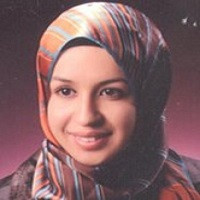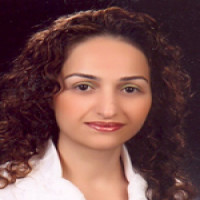Derleme
Issue Editorial Board

Prof. Dr. Oğuz Karabay üniversite öğrenimini Trakya Üniversitesi Tıp Fakültesinde 1992 yılında tamamladı. Aynı fakültenin Enfeksiyon Hastalıkları ve Klinik Mikrobiyoloji Anabilim Dalında 1997 yılında uzmanlığını aldı. Uzmanlık sonrasında Beykoz Devlet hastanesi ve Düzce SSK Hastanesinde çalıştı. 2003 yılında Abant İzzet Baysal Üniversitesinde yardımcı doçent ve 2006 yılında Doçent ünvanı aldı. 2008 yılında Sakarya Eğitim ve Araştırma hastanesinde klinik şefi ve kurucu Başhekim olarak atandı. 2011 yılında Sakarya Üniversitesi Tıp Fakültesi Enfeksiyon Hastalıkları Anabilim Dalı Profesör kadrosuna atandı. 2014-2016 yılları arasında Tıpta Uzmanlık Kurulu üyeliği ve Hastane Enfeksiyonları Danışma Kurulu üyeliği yaptı. 2012-2020 yılları arasında Sakarya üniversitesi Sağlık Bilimleri Enstitüsü müdürlüğü yaptı. 2020-24 yıllarında Sakarya Üniversitesi Tıp Fakültesi Dekanlığı görevini yaptı.
İlgi alanları, kronik hepatitler, Antibiyotik yönetimi ve HIV/AIDS oluşturmaktadır. Türkiye Enfeksiyon Hastalıkları Derneği (EKMUD) ve Viral hepatitle savaşım derneği olmak üzere birçok ulusal ve uluslararası derneğe üyedir. Uluslararası indekslerde taranan 310 yayını, 13 kitap ve kitap bölümü, 4 adet patenti bulunmaktadır.
Oğuz Karabay evli ve üç çocuk babasıdır.








Öğrenim Bilgisi
1975 – 1980 İlkokul Züferbey İlkokulu
1980 – 1986 Orta/Lise Mustafakemalpaşa Lisesi
1987 – 1993 Lisans Selçuk Üniversitesi Meram Tıp Fakültesi
1996 – 2000 Tıpta Uzmanlık Erciyes Üniversitesi Tıp Fakültesi Acil Tıp Anabilim Dalı
Akademik Görevler
1996 – 2000 Araştırma Görevlisi Erciyes Üniversitesi Tıp Fakültesi Acil Tıp Anabilim Dalı
2000 – 2002 Öğretim Görevlisi Erciyes Üniversitesi Tıp Fakültesi Acil Tıp Anabilim Dalı
2002 – 2006 Yardımcı Doçent Erciyes Üniversitesi Tıp Fakültesi Acil Tıp Anabilim Dalı
2006 – 2010 Doçent Erciyes Üniversitesi Tıp Fakültesi Acil Tıp Anabilim Dalı
2010 – 2013 Doçent İstanbul Üniversitesi Cerrahpaşa Tıp Fakültesi Acil Tıp Anabilim Dalı
2013 – Halen Profesör İstanbul Üniversitesi Cerrahpaşa Tıp Fakültesi Acil Tıp Anabilim Dalı
İdari Görevler
1993-1996 Bucak Devlet Hastanesi Acil Servis, Burdur, Acil Serviste Pratisyen Hekim
2008 – 2010 Erciyes Üniversitesi Tıp Fakültesi Acil Tıp Anabilim Dalı Başkanı
2016 – 2017 İstanbul Üniversitesi Cerrahpaşa Tıp Fakültesi Başhekim
2013 – 2016 İstanbul Üniversitesi Cerrahpaşa Tıp Fakültesi Başhekim Yardımcısı
2010 – Halen İstanbul Üniversitesi Cerrahpaşa Tıp Fakültesi Acil Tıp Anabilim Dalı Başkanı
Aim & Scope
Journal of Traditional and Complementary Anatolian Medicine (JTACAM) is a scientific journal aiming scientific studies at the national and international level to announce to the scientists and the experts, and thus to share scientific knowledge with the society.
Acupuncture; Apitherapy; Cupping Therapy; Phytotherapy; Hypnosis; Homeopathy; Chiropractic; Larvae Application; Mesotherapy; Music Therapy; Osteopathy; Ozone Therapy; Prolotherapy; Reflexology; Hirudotherapy.
Author Guidelines
Do not forget to use the template below while preparing your article!!!
Article writing templates:
Click here for the article writing template with 2 or more authors written in English.
Click for sample reference illustrations.
Information for Authors:
AMA citation system must be used in the articles.
Articles to be sent to our journal should be submitted with the user account opened through DergiPark.
Research articles and reviews of scientific books are published in Turkish or English.
Articles should have an introduction at the beginning and a conclusion at the end.
Articles should not exceed 30 pages and 10 thousand words, including all tables, figures, references (bibliography) and appendices.
Articles should be prepared in A4 paper size, using Cambria font in MS Word program.
Main headings and sub-headings should be arranged in 11 point bold.
The text should be written in 11 pt. 6 nk paragraphs and 1,15 line spacing.
At the beginning of the articles, there should be Turkish and English abstracts.
Abstracts should include maximum 250 words and include the purpose, scope, method and short results of the article.
Abstracts should be written in 9 font size, 0 pt paragraphs and single line spacing.
Minimum 3 Turkish and English keywords should be written under the abstracts.
The introduction part should include the purpose, scope, method and research design of the study as an expanded version of the abstract.
All manuscripts that pass the review process and are accepted for publication should be accompanied by an extended English abstract of 700-1000 words (For the articles written in Turkish).
Copyright Agreement and Author Acceptance Form must be attached.
Scientific Policies and Ethical Responsibility
The scientific responsibility of the articles belongs to the authors. All authors must actively participate in the study. In order for the submitted articles to be published in the journal, they must not have been previously published in another scientific publication. If the submitted article has been presented at any meeting before, The meeting name, date, and city where it is held must be stated. The protocol of clinical trials must be approved by the ethics committee of the relevant institution. For all studies conducted on humans, the “Methods and Materials” section must include a sentence stating that the study was approved by the relevant committee or that the study was conducted in accordance with the Declaration of Helsinki Principles. (Ethics committee date and protocol number) It should be stated in the text that all people included in the study signed the informed consent form. If the "Animal" element is used in the study, the authors must state in the Materials and Methods section of the article that they protect animal rights in their studies in line with the principles of the Guide for the Care and Use of Laboratory Animals and that they have received approval from the ethics committees of their institutions.
Publication Policy and Evaluation Process
All research published in the journal is open-access. The evaluation of the articles sent to the journal is carried out in three stages. In the first stage, articles are examined in terms of journal standards, and articles that do not comply with the spelling rules are rejected. After the article is edited according to the writing rules, it can be re-uploaded to the journal with the same name. In the second stage, the article is evaluated by the editorial board in terms of content and method. Articles that complete the first two stages go to the third stage and are sent to referees for review. Editorial evaluation and correction are applied to all articles. When necessary, authors may be asked to answer some questions and fill in the gaps. As a result of the evaluation, a decision of acceptance, minor revision, major revision, or rewriting may be required, or rejection may be given. The article decided to be published in the journal and taken into the printing process. At this stage, all information is subjected to detailed control and audit for accuracy. It is brought into pre-publication form and submitted to the authors' control and approval. Although the evaluation process takes at least 1 month, it can take up to 3-4 months due to the change in the author's response time and referee evaluation periods.
Publication Rights
According to the 1976 Copyright Act, all publishing rights of articles accepted for publication belong to the institution that publishes the journal. Authors must fill out the "Publication Rights Transfer Form" (signed by all authors in blue pen and with wet signatures), which can be accessed from the website https://dergipark.org.tr/tr/pub/gtatder and send it via the DergiPark website.
• In scientific studies other than case reports/series and reviews, the ethics committee approval certificate must be uploaded to the system.
• Studies whose data collection process was completed before November 2013 will not be accepted.
• Scientific studies must be uploaded to the DergiPark system with the names and surnames of the authors of the study (all authors' names included in the study must be written) and only the first letters of all words in the title of the study (except conjunctions) in capital letters.
• Authors' works will be published at most once a year, regardless of their name order.
• If it is documented that assistance has been received from professional institutions or organizations that provide academic editing services in the writing of English abstracts of scientific studies written in English or studies written in Turkish, these studies will be given priority.
Preparation of the Article
• For scientific studies of the review type, the number of authors should not exceed three.
• For case reports, the number of authors should not exceed six.
• Abbreviations should be given in parentheses at the first occurrence of the word in the abstract and main text, and that abbreviation should be used throughout the text. The suffixes added to the abbreviations made in lowercase letters are based on the pronunciation of the word: cm'yi, kg'dan, mm'den, kr. un. In addition to abbreviations made in capital letters, the pronunciation of the last letter of the abbreviation is taken as basis: BDT'ye, TDK'den, THY'de, TRT'den, TL'den, etc. However, the pronunciation of the abbreviation is based on the suffixes added to abbreviations that read like a word even though the abbreviation is written in capital letters: ASELSAN, BOTAŞ, NATO, UNESCO, etc. • The presentation page should be sent to the editor as a separate Word file. On the presentation page to the editor, the category of the work submitted, whether it has not been simultaneously submitted to another journal, whether it has not been previously published in another journal, the people and organizations that financially support the work, if any, and the relationships of these organizations with the authors, if any, should be stated.
Statistical Information Note
• The statistical method used should be stated in such detail that a knowledgeable reader with access to the original data can confirm the reported results. Statistical terms, abbreviations and symbols should be defined. An explanation of the computer program and statistical method used should be given. Sources regarding the study design and statistical method should be stated if possible.
• In presenting the results, especially when giving averages and percentages, 2 decimal places should be used after the decimal places (instead of 112.2, such as 112.20 or 112.21). p, t, Z values are exceptions and 3 digits should be given after the comma (full value p=0.001 instead of p<0.05). Presenting two digits after the comma in representations other than integers, presenting statistical values (such as p, t, z, F, Chi-Square) with three digits after the comma, presenting p values with test statistics instead of p<0.05 or p>0.05. However, the exact p-value (in case this value is less than one thousandth, p<0.001) must be shown.
Keywords
• At least 3 and at most 6 should be written in Turkish and English.
• Words must be separated from each other with a commas (,).
• English keywords should be given in accordance with “Medical Subject Headings (MESH)”.
• Turkish keywords should be given in accordance with Turkish Science Terms.
Resources
• Authors can only cite sources they directly used in their articles.
• References should be written in the order they appear in the text and should be specified as "Superscript" at the end of the sentence, immediately after the punctuation marks.
• If the number of authors in the study is 6 or less, all authors should be stated; if there are 7 or more, the first 6 names should be written, and “et al.” should be added.
• The format used for writing references must be as specified in Index Medicus (www.icmje.org).
• Only studies that have been published or accepted for publication or have a DOI number should be included in the reference list.
• The arrangement of the sources and punctuation must comply with the following examples (Please pay attention to punctuation): For the article, The surname(s) and initial(s) of the author(s), article name, journal name, year, volume, issue, page number must be stated. Example: Dilek ON, Yilmaz S, Degirmenci B, Ali Sahin D, Akbulut G, Dilek FH. The use of a vessel sealing system in thyroid surgery. Acta Chir Belg 2005;105:369-372. For the book, The surname(s) of the author(s) and initial(s) of their name(s), chapter title, name(s) of the editor(s), book title, edition number, city, publishing house, year and pages should be stated. Example: • For books published in foreign languages; Vissers RJ, Abu-Laban RB. Acute and Chronic Pancreatitis. In: Tintinalli JE, Kelen GD, Stapczynski JS (eds.), Emergency Medicine: A Comprehensive Study Guide. 6st ed. New York: McGraw-Hill Co.; 2005. p.573-577. • For Turkish books: Gokce O. Peptic ulcer. Dilek ON, editor. Stomach and Duedon. 1st Edition. Ankara: Anit Printing House; 2001. pp:265- 276. • Format for online publications: DOI is the only acceptable online reference.
Figures, Pictures, Tables, and Graphs
• The places where figures, pictures, tables, and graphs appear in the text should be stated at the end of the relevant sentence.
• Explanations of figures, pictures, tables, and graphs should be added to the end of the main text.
• Tables should be included in the file to which the article is sent, one table per page, but each of the figures, graphics, and photographs belonging to the article should be sent as a separate image file (jpeg or gif).
• Abbreviations used should be stated in the explanations below the figures, pictures, tables, and graphs.
• If previously published figures, pictures, tables, and graphics are used, written permission must be obtained, and this permission must be stated as an explanation in the description of the figure, picture, table, and graphic.
• Pictures/photographs must be colorful, contrasting, and clear enough to see details.
Conflict of interest: If the authors have any conflict of interest, this should be disclosed.
Acknowledgments: This section should include people or institutions that are not mentioned as authors but need to be thanked.
Contribution Rate Statement: In this section, what each researcher contributed to the research should be stated.
Ethical Principles and Publication Policy
Price Policy
Price Policy
• JTACAM does not request any fees for article submission, reviewing and editing processes, page-layout and publication (page or color fees).
• JTACAM does not pay any fees to authors, reviewers, editors and editorial board members.
• All papers on JTACAM are free to read and download.
• JTACAM does not accept announcements, advertisements, sponsorships, etc. due to its publication policy.



